《International Space Law and the United Nations》
| 作者 | Nandasiri Jasentuliyana 编者 |
|---|---|
| 出版 | Springer |
| 参考页数 | 440 |
| 出版时间 | 1999(求助前请核对) 目录预览 |
| ISBN号 | 9789041112170 — 求助条款 |
| PDF编号 | 813695778(仅供预览,未存储实际文件) |
| 求助格式 | 扫描PDF(若分多册发行,每次仅能受理1册) |
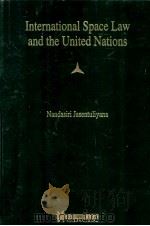
Chapter 1Space Law:The Newest Branch of International Law1
Ⅰ.Introduction1
Ⅱ.Space Law in the Pre-Sputnik Years2
Ⅲ.Post-Sputnik Development of Space Law:Role of the United Nations2
Ⅳ.The Proliferation of Space Law5
1.The Specialized Agencies of the U.N.System5
2.Regional & Multilateral Space Organizations and Agreements7
3.Other Multilateral Agreements ans Arrangements8
4.Non-governmental Organizations(NGO's)9
5.Bilateral Agreements10
6.National Laws,National Organizations11
7.Body of Case Law12
8.Teaching of Space Law14
9.Literature on Space Law16
Ⅴ.Space Law as a Discipline18
Chapter 2The United Nations and the Development of Space Law22
Ⅰ.Introduction22
Ⅱ.The Process of Space Law-Making in the United Nations23
1.COPUOS Established23
2.Main Components of the Process25
3.Consenstls27
4.Results Achieved29
Ⅲ.The Outer Space Treaties:An Overview32
1.The Outer Space Treaty,196732
2.The Rescue Agreement,196833
3.The Liability Convention,197235
4.The Registration Convention,197636
5.The Moon Agreement,197937
6.General Conmaents40
Ⅳ.The UN Principles on Outer Space:An Overview41
1.Declaration of Legal Principles on Outer Space41
2.Principles on Direct Broadcasting by Satellite(DBS)42
3.Principles on Remote Sensing43
4.Principles on Nuclear Power Sources44
5.Declaration on Outer Space Benefits46
Ⅴ.Pending Legal Issues50
1.Item 4:Definition of Outer Space:Geostationary Orbit50
2.New Agenda Item56
Ⅵ.The Future Development of Space Law by the United Nations56
1.The Space Debris Issue56
2.Establishing International Standards and Recommended Practices59
3.Commercial Use of Outer Space61
4.Manned Space Flight62
5.Other Matters62
Ⅶ.Conclusions64
Chapter 3Arms Control and the Law of Outer Space67
Ⅰ.Introduction67
Ⅱ.The UN and Space Weapons73
Ⅲ.Space Weapons and International Law:A Critique of Existing Treaties101
1.The United Nations Charter102
2.The 1967 Outer Space Treaty103
3.The Moon Agreement106
4.The Anti-Ballistic Missile(ABM)Systems Treaty107
5.The Test Ban Treaty112
6.The SALT Ⅰ Treaty112
7.The SALT Ⅱ Treaty113
8.Other Treaties114
9.An Appraisal115
Ⅳ.Civilian and Military Space Activities:A Third World Perspective119
1.Space Activities with regard to Developing Countries119
2.Militarization of Outer Space:Views from Developing Countries119
3.Implications of Space Weapons for the Developing Countries123
4."Third World" Participation in the Star Wars Debate127
Ⅴ.Conclusion129
Chapter 4The Role of the Developing Countries in the Formulation of Space Law130
Ⅰ.Introduction130
Ⅱ.The Treaties and the Role of Developing Countries131
Ⅲ.The "Common Heritage of Mankind"139
Ⅳ.Principles on Direct Broadcasting by Satellite(DBS)144
Ⅴ.Principles on Remote Sensing147
Ⅵ.The Geostationary Orbit and the Regulation of Satellite Communications150
Ⅶ.Outer Space Benefits157
Ⅷ.Looking Ahead166
Chapter 5Access to Space Technologies-Article 1 of the Outer Space Treaty169
Ⅰ.Introduction169
Ⅱ.A New Item on Sharing of Outer Space Benefits in the Agenda of the Legal Sub-Committee of COPUOS170
Ⅲ.Article 1 of the Outer Space Treaty in the Context of the New Agenda Item173
1.The Objective of Article 1:Space Exploration "For the benefit"and "In the interest"of All Countries174
2.The Obligatory Nature of Article 1.Paragraph 1176
Ⅳ.Consideration of the New Agenda Item177
1.Legal Subcommittee177
2.Conmaittee on the Peaceful Uses of Outer Space183
Ⅴ.The Role of the United Nations and Other International Organizations183
Ⅵ.Conclusion185
Chapter 6Legal Aspects of Human Safety and Rescue in Space187
Ⅰ.The 1967 Outer Space Treaty187
Ⅱ.The 1968 Rescue Agreement187
Ⅲ.The 1979 Moon Agreement188
Ⅳ.General Considerations189
Ⅴ.Advances in Human Space Flight189
Ⅵ.Problems with the Existing Legal Framework190
1.Non-contracting States190
2.Personnel and passengers190
3.Unintended landing191
4.Rescue and Assistance in Space191
5.Responsibility and Liability in International Missions192
6.Expenses192
7.Hostile Activities193
Ⅶ.Proposed Law on Safety and Rescue193
Ⅷ.Conclusion195
Chapter 7Space Salvage Operations197
Ⅰ.Introduction197
Ⅱ.Maior Provisions of International Space Law200
1.Responsibility and Liability200
2.Return of Space Objects of Another State203
3.Article Ⅷ of the Outer Space Treaty:Jurisdiction and Control and Ownership of Space Objects,Component Parts and Orbital Debris204
4.Article Ⅸ of the Outer Space Treaty205
Ⅲ.Maritime Salvage Law208
1.What is a Derelict?208
2.Salvage of Derelict Vessels209
3.The International Maritime Organization209
Ⅳ.Application of Maritime Salvage Law Concepts to Space Objects,Component Parts and Orbital Debris210
Ⅴ.Conclusion213
Chapter 8Conflict Resolution in Outer Space215
Ⅰ.Consultation/Good Offices218
Ⅱ.Claims Commission/Conciliation220
Ⅲ.Arbitration220
Ⅳ.Adjudication223
Ⅴ.Conclusion223
Chapter 9The Moon Agreement224
Ⅰ.Introduction224
Ⅱ.Conditions Essential for Peaceful Uses of Space Activities:Contributions of the Moon Agreement226
Ⅲ.Military Implications of Space Activities in International Law before and after the Moon Agreement235
Ⅳ.An Appraisal244
Chapter 10Space Communications250
Ⅰ.Introduction250
Ⅱ.Benefits of Satellite Comnaunications251
Ⅲ.The International Regulatory Regime for Satellite Communications:The Meaning for Developing Countries252
1.Introduction252
2.The Role of the United Nations253
3.Legal Principles Governing the Geostationary Orbit256
4.Natural Limitations260
5.Problems Facing the Developing Countries260
6.Initiatives to Bring Space Conmaunication Within the Context of New lnfomlation Order261
7.Early Developments266
8.The Situation Before the WARB-ORB 85 Conference267
a)The ITU and Coordination of the Geostationary Orbit267
b)The Equatorial States and the Question of Sovereignty268
9.WARC-ORB 85268
a)Concerns and Proposals Prior to the WARC-ORB 85268
b)Choices for the Developing Countries270
c)Results of the WARC-ORB 85273
10.WARC-ORB 88274
a)Results274
b)Interests of Developing Countries275
c)Analysis277
Chapter 11Regulatory Challenges and the Future of International Telecommunication Law278
Ⅰ.Introduction278
Ⅱ.The Space Age280
Ⅲ.Existing Space Telecommunications Law283
Ⅳ.Pending Issues in Space Telecommunications Law291
Ⅴ.International Space Telecommunications Law and the Future295
1.LEOs and Mobile Satellite Services296
2.Global Navigation Satellite System(GNSS)299
3.Commercialization,Deregulation,Globalization & Privatization302
4.Transfer of Telecommunications Technology304
5.Telemedicine305
6.Satellite Telecommunications:Case Law & Potential Disputes306
ⅥConclusions311
Chapter 12The United Nations Remote Sensing Principles and National Security314
Ⅰ.Adoption of the Principles314
Ⅱ.The Political Basis for the Agreement315
Ⅲ.Collection of Sensitive Information316
Ⅳ.Remote Sensing and International Relations317
Ⅴ.Future Developments in Remote Sensing318
Ⅵ.Remote Sensing and Disarmament319
Ⅶ.Conclusion320
Chapter 13Space Debris and International Law:Role of the United Nations321
Ⅰ.Space Debris And Current International Space Law322
Ⅱ.Recent Developments in the Study and Analysis of Space Debris Issues by the United Nations329
1.Initiation of a multi-year plan of study329
2.Measurements of Space Debris333
3.Modelling of Space Debris Environment and Risk Assessment334
4.Space Debris Mitigation Measures337
5.The technical assessment342
Ⅲ.Future Regulation and Control of Space Debris343
Chapter 14International Cooperation in Space350
Ⅰ.The Benefits of Space Technology350
Ⅱ.The Advantages of International Cooperation350
Ⅲ.An Agenda for International Cooperation for Sharing the Benefits of Space Technology351
1.Remote Sensing351
2.Geostationary Orbit354
3.Direct Broadcasting Satellites356
Ⅳ.The Conunittee on the Peaceful Uses of Outer Space359
Ⅴ.Technical Assistance to Developing Countries360
Ⅵ.Education and Training361
Ⅶ.Financial Assistance for Space Projects363
Ⅷ.International Space Law364
Ⅸ.International Cooperation and Mars Exploration365
1.Learning from the Past365
2.The Groundwork for Cooperation already exists368
3.Getting from here to there370
4.Balancing Priorities370
Chapter 15Lessons For Space Law Through The Experience Of Air Law372
Ⅰ.Introduction372
Ⅱ.The Aamexes to the Chicago Convention373
Ⅲ.Applicability to Space Law377
1.The Need for Technical Annexes in Space Law377
2.The Fommlation and Adoption of Space Standards381
a)Responsible Body381
b)Procedure to be Followed382
c)Suggestion for Space Activities384
ⅰ)Environmental Standards384
ⅱ)Search and Rescue Standards385
ⅲ)Standards for the Operation of Spacecraft385
ⅳ)Other Space Standards385
Ⅳ.Conclusion385
Chapter 16Recent and Future Developments in Space Law-Making:Preparing for the 21st Century387
Ⅰ.Introduction387
Ⅱ.Continuing Issues in Space Law-Making392
1.NPS Principles392
2.Definition and Delimitation of Outer Space and the Character and Utilization of the Geostationary Orbit393
Ⅲ.Recent and Future Developments396
1.New Agenda Item for Legal Subcommittee397
2.Space Debris397
3.International Space Telecommunications399
4.Satellite Telecommunications:Case Law & Potential Disputes401
5.Establishing International Standards and Recommended Practices402
6.Commercial Use of Outer Space404
7.Manned Space Flight405
8.Other Matters405
Ⅳ.UNISPACE Ⅲ408
1.Preparation of the UNISPACE Ⅲ Conference408
2.Policy & Legal Issues at UNISPACE Ⅲ410
Ⅴ.Conclusion411
Bibliography415
Index435
1999《International Space Law and the United Nations》由于是年代较久的资料都绝版了,几乎不可能购买到实物。如果大家为了学习确实需要,可向博主求助其电子版PDF文件(由Nandasiri Jasentuliyana 1999 Springer 出版的版本) 。对合法合规的求助,我会当即受理并将下载地址发送给你。
高度相关资料
-
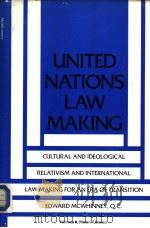
- UNITED NATIONS LAW MAKING Cultural and ideological Relativism and International Law Making for an Er
- 1984 HOLMES & MEIER PUBLISHERS
-

- THE DEVELOPMENT OF INTERNATIONAL LAW THROUGH THE POLITICAL ORGANS OF THE UNITED NATIONS
- 1963 OXFORD UNIVERSITY PRESS
-

- UNIFORM LAW FOR INTERNATIONAL SALES UNDER THE 1980 UNITED NATIONS CONVENTION THIRD EDITION
- 1999 KLUWER LAW INTERNATIONAL
-

- International Law and United States Law
- 1999 Ashgate Dartmouth
-
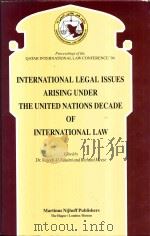
- International Legal Issues Arising Under the United Nations Decade of International Law
- 1995 Martinus Nijhoff Publishers
-

- The United Nations and International Peacekeeping
- 1996 I.B. Tauris Publishers
-

- CASES ON UNITED NATIONS LAW
- 1956 STEVENS & SONS LIMITED
-

- UNIFOM LAW FOR INTERNATIONAL SALES UNDER THE 1980 UNITED NATIONS COVENTION
- 1991 KLUWER LAW AND TAXATION PUBLISHERS
-
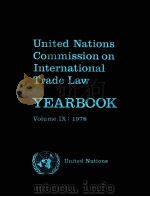
- UNITED NATIONS COMMISSION ON INTERNATIONAL TRADE LAW VOLUME 9:1978
- 1981 UNITED NATIONS
-

- Tax policy towards the national heritage
- 1984 Kluwer International Law and Tayation Publishers
-
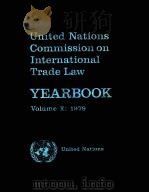
- UNITED NATIONS COMMISSION ON INTERNATIONAL TRADE LAW VOLUME 10:1979
- 1981 UNITED NATIONS
-

- THE UNITED NATIONS AND INTERNATIONAL LAW
- 1986 CAMBRIDGE UNIVERSITY PRESS
-

- SPACE STATIONS INTERNATIONAL LAW AND POLICY
- 1979 WESTVIEW PRESS
-

- UNIFORM LAW FOR INTERNATIONAL SALES UNDER THE 1980 UNITED NATIONS CONVENTION
- 1980 KLUWER LAW AND TAXATION PUBLISHERS
-

- THE LEAGUE OF NATIONS AND THE NEW INTERNATIONAL LAW
- 1921 OXFORD UNIVERSITY PRESS
提示:百度云已更名为百度网盘(百度盘),天翼云盘、微盘下载地址……暂未提供。➥ PDF文字可复制化或转WORD